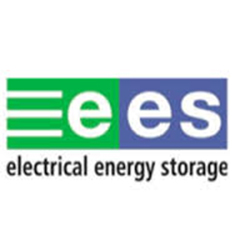Munich, March 21, 2017 – The energy storage industry is evolving: ees Europe, the continent’s largest exhibition for batteries and energy storage systems, is setting a new exhibitor record, an achievement which is also being felt at the accompanying ees Europe Conference. After all, when interesting energy topics draw a broad range of exhibitors and trade visitors, discussions inevitably turn to innovative technologies, future visions and current challenges on the energy storage market. From May 30–31, the ees Europe Conference will offer an extensive presentation program and serve as a presentation and discussion platform alongside the exhibition for the third year running.
For attendees, the ees Europe Conference is the ideal meeting point to learn about the energy storage topics currently affecting the industry, make new contacts and network for future projects, or simply exchange knowledge. It is only fitting then that the event is being held in conjunction with the conference for Intersolar Europe, the world’s leading exhibition for the solar industry and its partners. Here, attendees will discuss the future of solar and renewable energy – a successful synergy. Sessions at ees Europe Conference will cover new storage technologies for use in homes, commercial properties as well as large-scale storage systems. Also on the agenda are energy management, profitability and political framework conditions for the future of Germany’s energy supply.
The varied range of topics at the conference is largely thanks to the wave of new exhibitors presenting their innovative battery and storage systems solutions at ees Europe in 2017. This year, the number of exhibitors has increased by 40 percent – around 270 companies are expected at the event, pushing the total exhibition area to 17,500 sqm. Together with the storage system providers at Intersolar Europe, over 400 companies will be presenting their solutions and services from the energy storage industry.
Hot topics: Domestic storage systems, lithium-ion cells and non-battery storage
By the end of 2016, 52,000 solar storage units had been installed in Germany alone. The trend seen in recent years continues, and those wanting to keep up to date should make a stop at the session titled Status of PV Home Storage: Competing Technologies, Performance Optimization. There are many competing concepts in this area, and individual decisions will be discussed and explained during the presentation using practical examples. This topic gives way to questions regarding optimization and profitability, which are also addressed. Similar challenges face commercial PV systems on roofs of supermarkets, cottage industries or production facilities. The Real-Life Project: Commercial & Utility Scale session looks at how the energy generated in this way can be marketed by energy suppliers, how on-site energy costs can be cut and where the financial potential of PV battery systems lies (in the case of prosumers and energy suppliers).


























